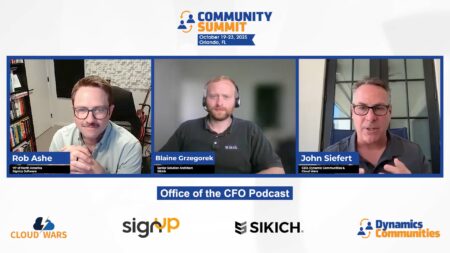Low-code/no-code software development provides novel capabilities to string together complex applications using standard components. It’s reshaping the way applications are constructed and democratizing who has access to programming. Along the way, low-code is providing specific industries with a new means to innovate.
One such area is Product Lifecycle Management (PLM)—a concept that spans product design, manufacturing, shipping, distribution, and marketing. Managing a complex product lifecycle often requires syncing up disparate supplier data and disconnected partner systems, which can be tricky, especially without software engineering talent.
CLEVR is a consultancy utilizing the Mendix low-code platform to produce custom applications for its clients and industry-specific components. In the PLM world, CLEVR has found that low-code/no-code shines due to its rich integration, ability to reuse standard components, and capacity to innovate quickly.
I recently met with the folks at CLEVR to see how low-code platforms are accelerating PLM. Below, we’ll see how this space could benefit from low-code and consider the challenges therein. We’ll also forecast how the future looks for low-code.
PLM, Meet Low-code
What exactly is Product Lifecycle Management, or PLM? Magnus Normann, Tribe Lead at CLEVR, described it as “the management of data that is going to somehow capture and develop a product or service.” PLM is necessary for many sectors that require a window into a long-term product lifecycle.
Like ERP, CRM, and HRM systems, PLM can be complex and multi-dimensional. Naturally, this involves a lot of data from various domains. For example, in manufacturing, a PLM system may help synchronize quality assurance owners with assembly procedures, ensuring operations are reused and continuously improved from ideation through to production. In retail, PLM can act as a necessary middle-man, helping to synchronize data between multiple suppliers.
In both cases, utilizing a common low-code platform can help integrate APIs to create custom solutions, according to the CLEVR team. For example, they described how global retail clothing brand Nike utilized low-code to extend its PLM retail process. That team was able to quickly stitch together a Nike app where users can rate different shoes and outfits. Such a system could be used to optimize distribution for specific items throughout the world, thus reducing waste in the supply chain and increasing profit.
Ways Low-code Can Accelerate PLM
Innovation and speed to market. “Low-code gives you the ability to be innovative,” said Angelique Schouten, CEO of CLEVR. Being able to integrate with anything in an open system could help spur rapid development and avoid costly mistakes. “Removing data accessibility barriers brings opportunities to understand business decisions,” added Schouten. With low-code, you could turn a complex concept into an app within a couple of weeks, accelerating a go-to-market strategy.
Right integrations. There are many ways low-code can improve PLM, but one aspect that stands out is its ability to enable rich integrations, explained Normann. Low-code helps unite disparate data from multiple domains. Like a ship captain directing the actions of a crew, a low-code user can combine information silos, envision solutions, and enact these decisions to deliver real-world outcomes. This deep integration capability is something traditionally lacking in the PLM space, said Normann. He says that having shareable, digitized information of the manufacturing site could enable production to optimize based on factory conditions and sustainability requirements.
Syncing up APIs. “APIs are a big and important part of a low-code environment,” said Wouter van Dee, Manager Professional Services, CLEVR. A low-code platform could not only also alleviate the burden of aggregating data from multiple sources, but help keep data in sync. This relies on stable API connections, which can be cumbersome to integrate with and maintain. A standard low-code layer could help retain up-to-date connections.
Increasing efficiency with reusable components. According to Schouten, centralized development also “aids efficiency by bypassing arguments over tools.” A core benefit of a common software platform is the ability to develop and share standard components. For example, the CLEVR team’s low-code platform of choice is Mendix, whose marketplace enables them to share standard components for common use cases.
More malleable frontends. In the wake of a digital-first economy, “every organization is now a software company,” said van Dee. Low-code can bring innovation to otherwise static industries, helping them stand out from the competition. For example, when you compare dollars and cents, most consumer insurance carriers offer very similar rates. Yet, where they differ is the digital interaction point with the end consumer. Low-code can thus allow for innovation of customer portals while retaining core systems in the bottom layer.
Roadblocks to Adoption
Introducing low-code into PLM, as with other areas, does face inevitable roadblocks. First and foremost is awareness. A recent study found that, surprisingly, 40% of Chief Technology Officers in North America had never even heard of low-code. This means low-code advocates may face an education gap as they look to bring these solutions to fruition.
“The limits of no-code are smaller then some people think,” said Wouter van Dee. Yet, “low-code is no magic wand,” he admits. A potential risk is that low-code users may assume they can eschew the traditional practices surrounding a high-code approach, such as DevOps, security, and planning for scalability. Though low-code can enable faster development, it still requires governance around the project. Plus, unbridled software development automation can bring negative consequences to productivity, report other engineers. “You cannot lose that developer mindset,” said van Dee.
Change on the Horizon
Gartner estimates that by 2024, 80% of digital products will be constructed by citizen developers working outside of traditional IT. With this in mind, “we will see an explosion in PLM applications coming out of low-code,” said Normann. Today, there is still a relatively low degree of low-code utilization, as many industries have yet to adopt it. Filling this knowledge gap will likely require more thought leadership to help digitize manufacturing operations.
But once adoption is more widespread, low-code will likely spur conventional systems out of stagnation, changing how we create and manage products. “Outdated enterprise systems that require years of customizations will not be tolerated anymore,” said Schouten. In this new paradigm, traditional parties and bespoke vendors will find it difficult to compete with those who look at the whole ecosystem.






